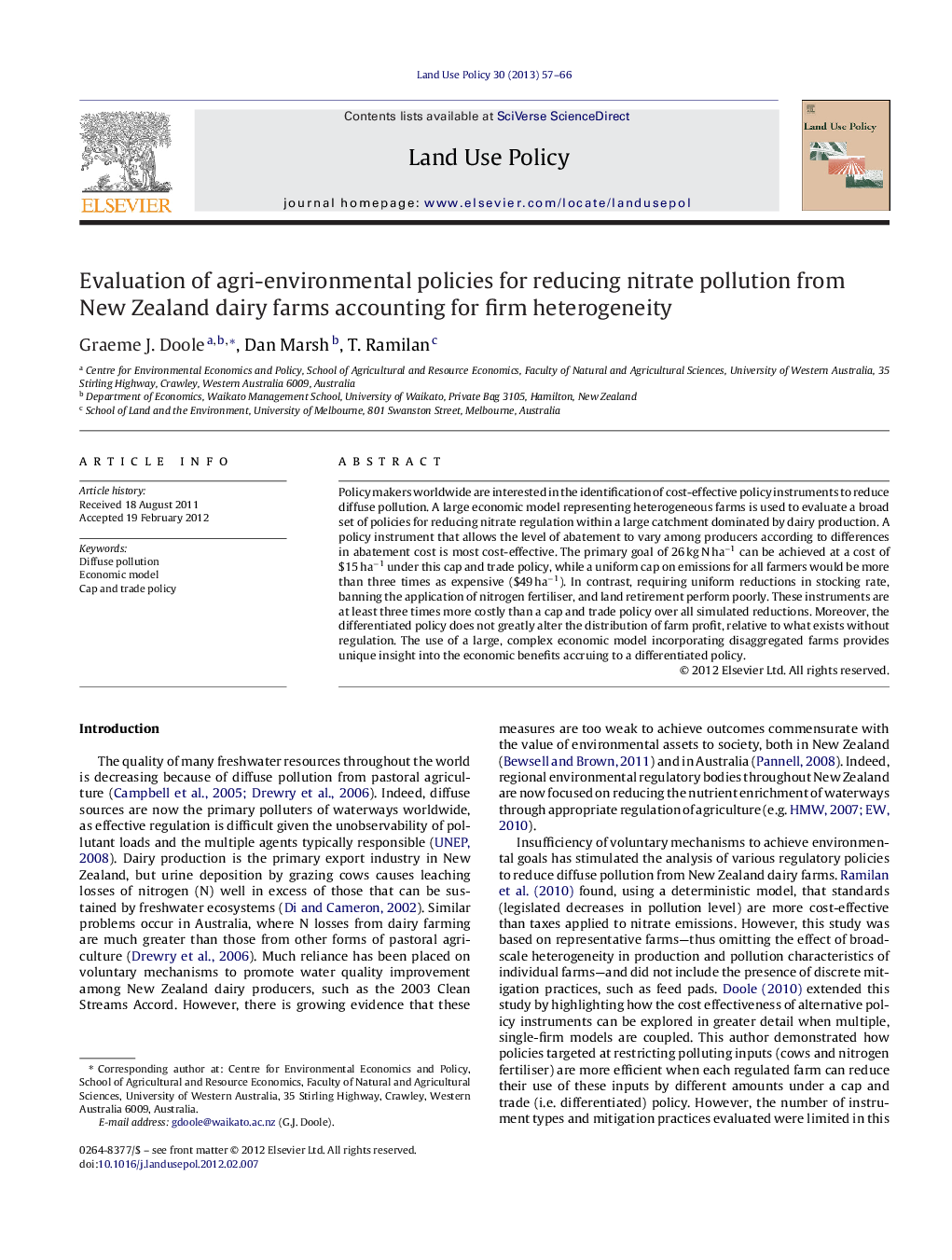| Article ID | Journal | Published Year | Pages | File Type |
|---|---|---|---|---|
| 92966 | Land Use Policy | 2013 | 10 Pages |
Policy makers worldwide are interested in the identification of cost-effective policy instruments to reduce diffuse pollution. A large economic model representing heterogeneous farms is used to evaluate a broad set of policies for reducing nitrate regulation within a large catchment dominated by dairy production. A policy instrument that allows the level of abatement to vary among producers according to differences in abatement cost is most cost-effective. The primary goal of 26 kg N ha−1 can be achieved at a cost of $15 ha−1 under this cap and trade policy, while a uniform cap on emissions for all farmers would be more than three times as expensive ($49 ha−1). In contrast, requiring uniform reductions in stocking rate, banning the application of nitrogen fertiliser, and land retirement perform poorly. These instruments are at least three times more costly than a cap and trade policy over all simulated reductions. Moreover, the differentiated policy does not greatly alter the distribution of farm profit, relative to what exists without regulation. The use of a large, complex economic model incorporating disaggregated farms provides unique insight into the economic benefits accruing to a differentiated policy.
